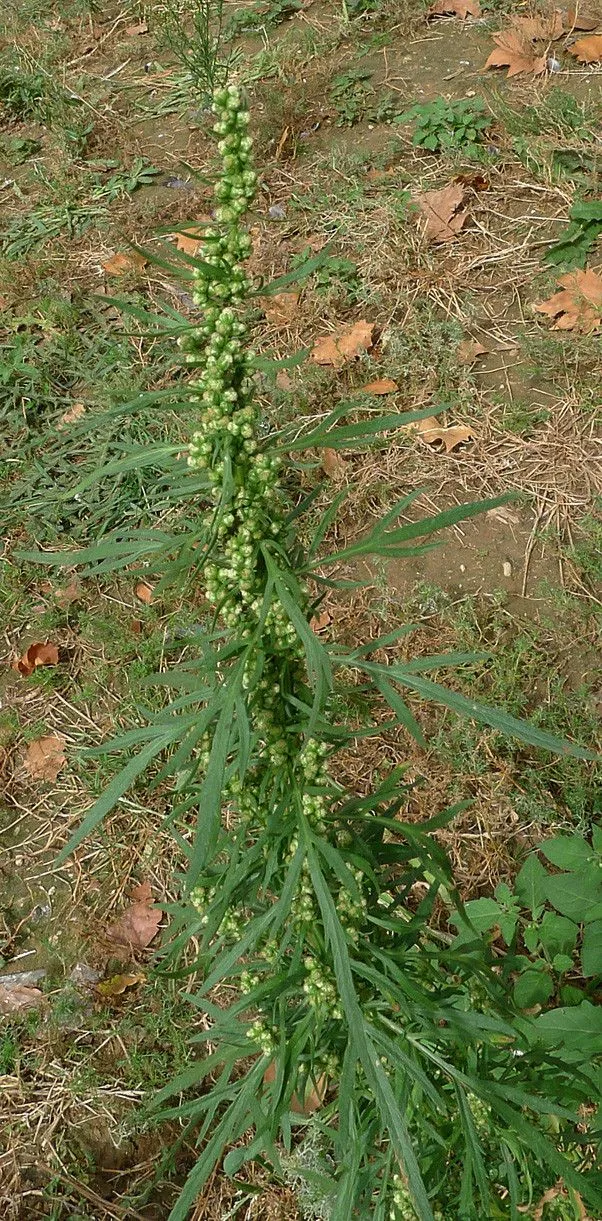
Author: Willd.
Bibliography: Phytographia 1: 11 (1794)
Year: 1794
Status: accepted
Rank: species
Genus: Artemisia
Vegetable: False
Observations: Alaska to W. U.S.A.
Biennial wormwood is a plant species scientifically known as Artemisia biennis. This plant is a member of the Asteraceae family, a diverse and significant family in the world of flowering plants. First documented in “Phytographia” in 1794 by Willd., Artemisia biennis has captivated botanists and plant enthusiasts for centuries with its unique characteristics and ecological presence.
Originating and thriving in a vast geographical range, biennial wormwood is widely observed from Alaska down through the western regions of the United States. This broad habitat range signifies its adaptability to different environmental conditions and highlights its resilience in various climates and terrains.
Biennial wormwood follows a two-year life cycle, defining its designation as a biennial plant. During its first year, it primarily focuses on vegetative growth, developing a robust root system and foliage. In its second year, the plant progresses to its reproductive phase, producing flowers and seeds to continue its legacy. This life cycle strategy allows it to thrive and persist across its extensive range.
The plant is characterized by its erect, slender stems that can grow to significant heights, bearing deeply lobed leaves that are aromatic when crushed. The foliage is typically a vibrant green, adding to the plant’s aesthetic appeal and ecological value. In its flowering stage, biennial wormwood displays small, inconspicuous flowers that, while not particularly showy, play a crucial role in its reproductive success.
Artemisia biennis is an integral component of its native habitats, contributing to the biodiversity and stability of the ecosystems it inhabits. Its presence can often serve as an indicator of soil conditions and environmental changes, making it a subject of interest not just for its beauty but also for its ecological significance.
In conclusion, biennial wormwood, or Artemisia biennis, is a noteworthy species within the Asteraceae family, recognized for its extensive range from Alaska to the western United States and its distinct biennial life cycle. Documented in the late 18th century, this plant continues to be a point of interest for botanists and ecologists alike, offering insights into the diverse and dynamic world of plant life.
Fra: armoise bisannuelle, armoise bisanuelle
Eng: biennial wormwood, slender mugwort, biennial sagewort
Nld: rechte alsem
Dan: toårig bynke
Deu: zweijähriger beifuss, zweijähriger beifuß
Ces: pelyněk dvouletý
Hun: ürömfaj
Swe: smalmalört
Cym: beidiog fain, y feidiog fain
En: Biennial wormwood, Slender mugwort, BIENNIAL SAGEWORT, Ahinahina
Zh: 二年生蒿
Cs: Pelyněk dvouletý
Da: Toårig bynke
Nl: Rechte alsem
Fi: Sahamaruna
Fr: Armoise bisanuelle, Armoise bisannuelle
De: Zweijähriger Beifuß, Zweijähriger Beifuss, Armenischer Beifuß
Hu: Ürömfaj
It: Assenzio bienne
Fa: برنجاسف دوساله
Sv: Smalmalört
Zh-tw: 二年生蒿
Cy: Y feidiog fain, Beidiog Fain
© copyright of the Board of Trustees of the Royal Botanic Gardens, Kew.
Taken Sep 20, 2015 by Tela Botanica − Marie PORTAS (cc-by-sa)
Taken Sep 2, 2013 by Tela Botanica − Bertrand BUI (cc-by-sa)
Taken Sep 2, 2013 by Tela Botanica − Bertrand BUI (cc-by-sa)
Taken Sep 2, 2013 by Tela Botanica − Bertrand BUI (cc-by-sa)
Taken Jul 3, 2022 by Andrzej Konstantynowicz (cc-by-sa)
Taken Sep 1, 2021 by Maxime Bélanger (cc-by-sa)
Taken Sep 24, 2022 by Lynn Andrews (cc-by-sa)
Taken Jul 3, 2022 by Andrzej Konstantynowicz (cc-by-sa)
Taken Sep 1, 2021 by Maxime Bélanger (cc-by-sa)
Taken Dec 19, 2020 by Trisha Burch (cc-by-sa)
Taken Jan 1, 1900 by EOL − WVU Herbarium (cc-by-nc-sa)
Taken Sep 1, 2021 by Maxime Bélanger (cc-by-sa)
Taken Jul 3, 2022 by Andrzej Konstantynowicz (cc-by-sa)
Taken Sep 16, 2022 by marc detollenaere (cc-by-sa)
Taken Jul 5, 2020 by Erin (cc-by-sa)
Taken Sep 15, 2013 by Photoflora – Benoit BOCK (©)
Taken Sep 15, 2013 by Photoflora – Benoit BOCK (©)
Taken Sep 15, 2013 by Photoflora – Benoit BOCK (©)
Taken Sep 15, 2013 by Photoflora – Benoit BOCK (©)
Taken Sep 15, 2013 by Photoflora – Benoit BOCK (©)
Taken Jul 12, 2022 by karen karen (cc-by-sa)
Taken Sep 15, 2013 by Photoflora – Benoit BOCK (©)
Taken Sep 15, 2013 by Photoflora – Benoit BOCK (©)
Taken Sep 15, 2013 by Photoflora – Benoit BOCK (©)
Taken Sep 15, 2008 by Photoflora – Jean-Luc TASSET (©)
Taken Sep 2, 2013 by Tela Botanica − Bertrand BUI (cc-by-sa)
Growth habit>: Forb/herb
Ph maximum: 7.5
Ph minimum: 7.0
Light: 8
Atmospheric humidity: 5
Soil nutriments: 8
Family: Myrtaceae Author: (F.Muell.) K.D.Hill & L.A.S.Johnson Bibliography: Telopea 6: 402 (1995) Year: 1995 Status:…
Family: Rubiaceae Author: Pierre ex A.Froehner Bibliography: Notizbl. Bot. Gart. Berlin-Dahlem 1: 237 (1897) Year:…
Family: Sapindaceae Author: Koidz. Bibliography: J. Coll. Sci. Imp. Univ. Tokyo 32(1): 38 (1911) Year:…
Family: Asteraceae Author: A.Gray Bibliography: Pacif. Railr. Rep.: 107 (1857) Year: 1857 Status: accepted Rank:…
Family: Fabaceae Author: Medik. Bibliography: Vorles. Churpfälz. Phys.-Ökon. Ges. 2: 398 (1787) Year: 1787 Status:…
Family: Aspleniaceae Author: (Cav.) Alston Bibliography: Bull. Misc. Inform. Kew 1932: 309 (1932) Year: 1932…